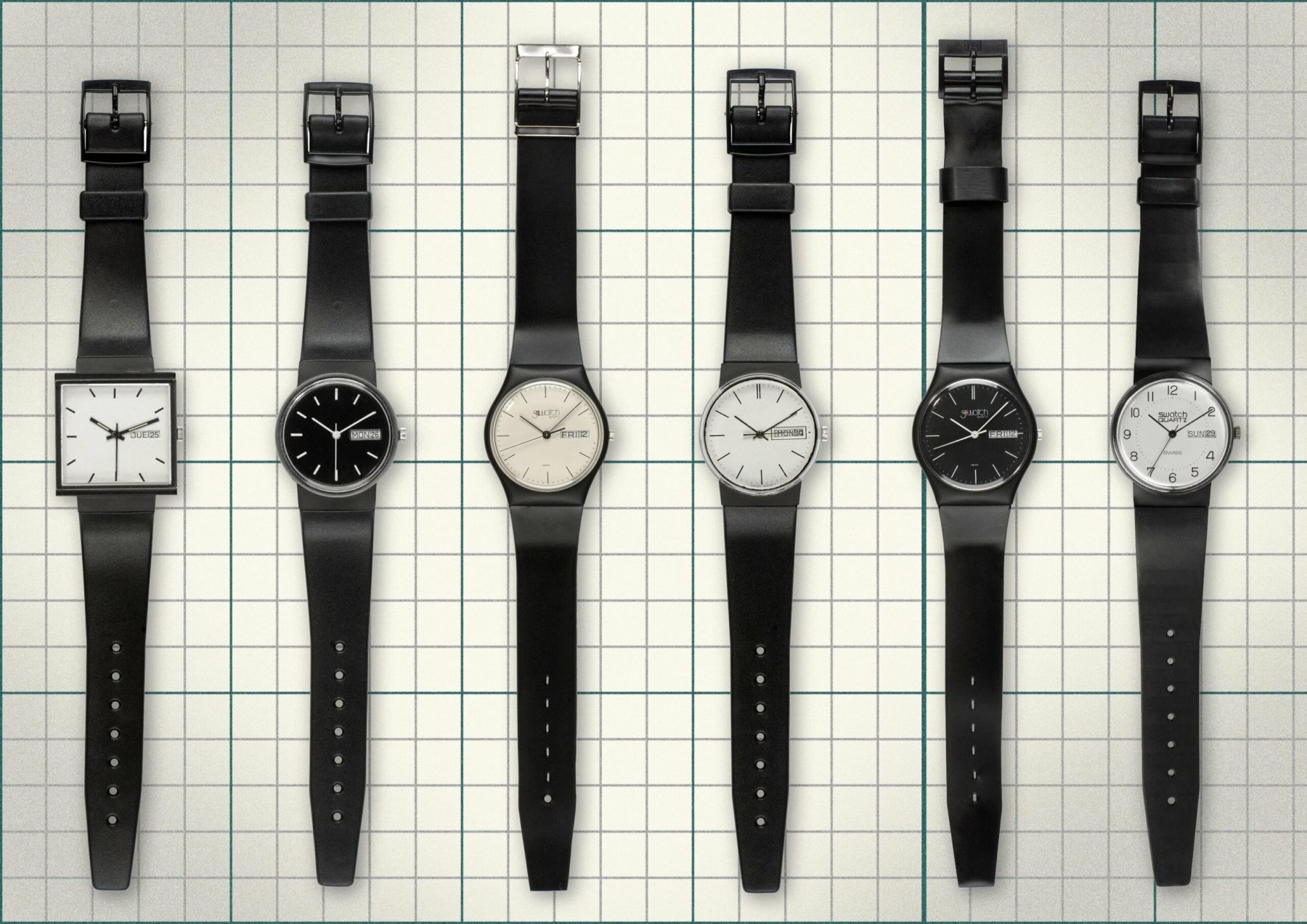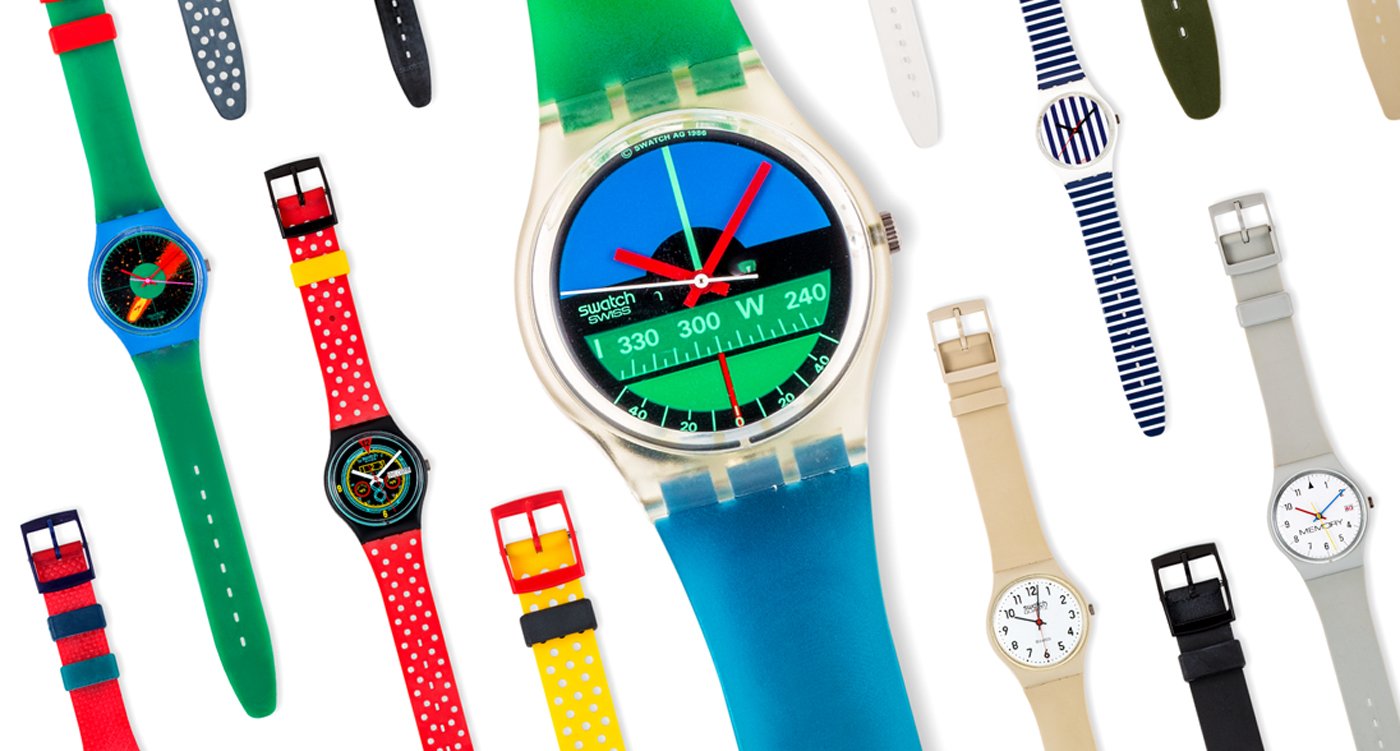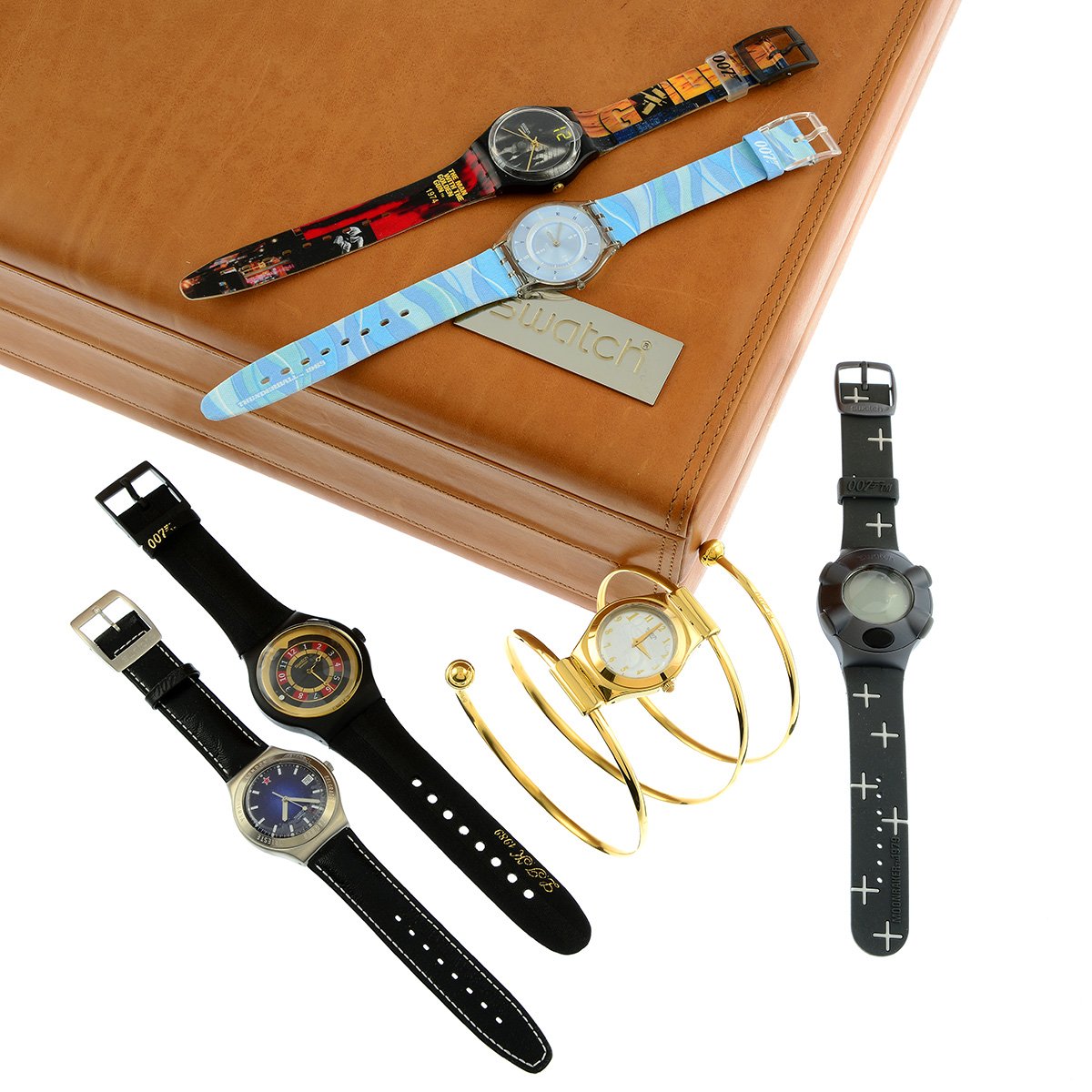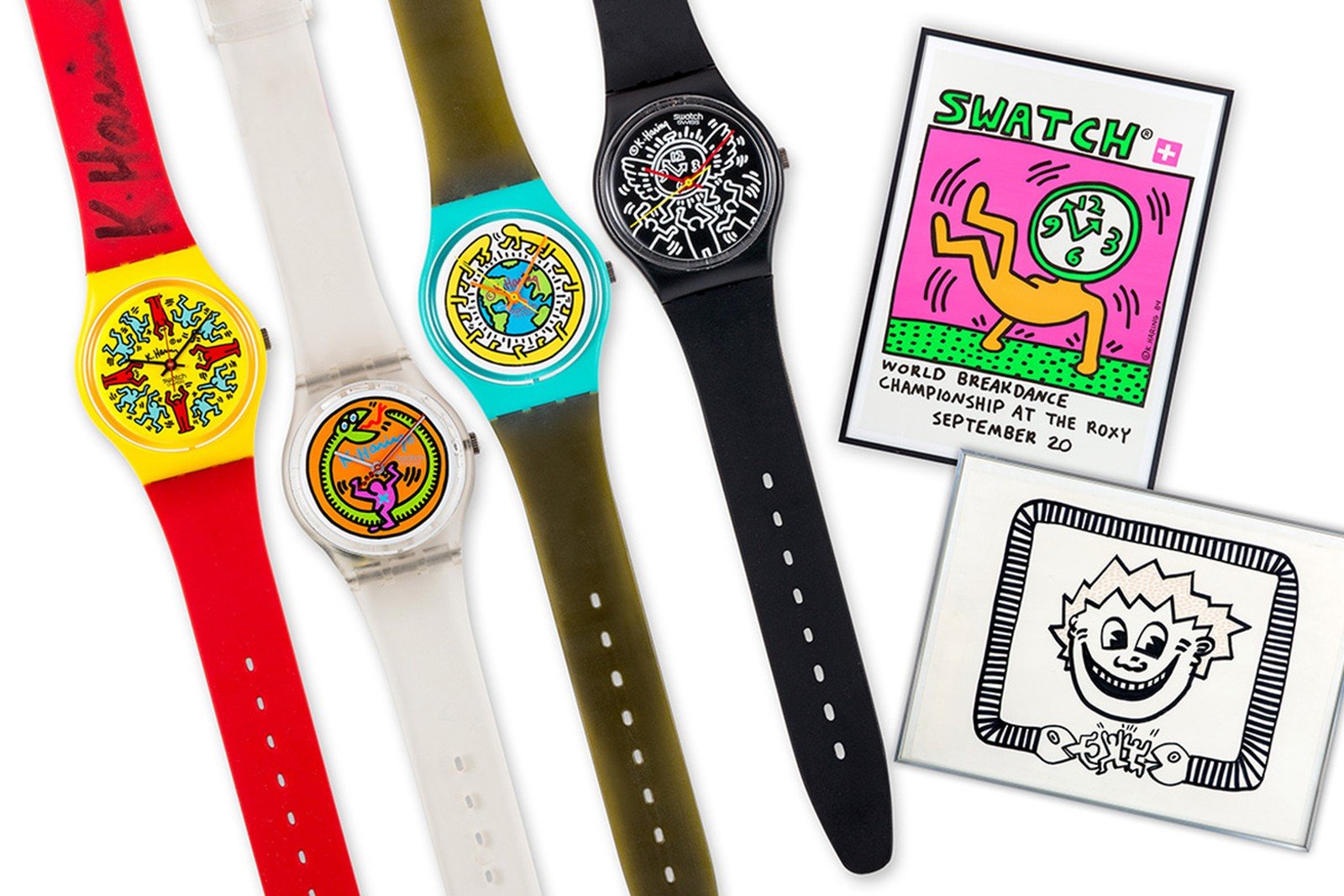40 Years Of Swatch: A Look Back At The Plastic Watch That Changed Everything
Did you know that Swatch turns 40 years old next week? On March 1st, 1983, Swatch introduced its first collection of 12 watches in Zürich, Switzerland. And, as they say, the rest is history. To celebrate the great history of Swatch, we will bring you a series of articles dedicated to this special brand. From its history to the standout models and spectacular promotional campaigns, Swatch is and always has been a unique brand. In this first article of many, we dive into the great history of Swatch. How did it get started, and what have been some of the most remarkable achievements? It’s time to kick off Swatch month with a look back at how it all began!
Owning a Swatch… It was a special feeling in the 1980s when I grew up, and it still is a special feeling today. I was in the Swatch boutique in Antwerp only a couple of weeks ago, and I still get genuinely excited by all the different watches the brand offers. It is truly like coming home and seeing old memories come alive in a store. I got my first Swatch in 1989 as a birthday gift from my parents. I do not remember how I chose, but for my 12th birthday, I knew I wanted a Swatch. It was the first of several Swatch models during my teenage years. The colorful timepieces were a statement of personal style, and everyone could express their uniqueness through them. This is what made Swatch so great then, and it still is the foundation of why it is such a fantastic brand today.
The Swiss watch industry in trouble
When it comes to style and design, the ’80s were a special time. Commonly perceived as a decade with a distinct lack of style (or rather, an abundance of tacky design), the ’80s are often frowned upon. But Swatch took watch design to a completely different level in the 1980s. The brand created watches that were provocative, loud, and colorful. Growing up in the ’80s, I loved seeing this new brand creating waves. But as a teenage onlooker, little did I know how important Swatch would become in the Swiss watch industry.
Swatch was the weapon that the Swiss watch industry needed to fight the Japanese brands that had taken over. While the 1970s were filled with tremendous change in the watch industry, the 1980s showed the consequences of that change. In the late ’70s and early ’80s, Seiko was the biggest watch brand in the world. When Seiko started the quartz revolution in 1969, most Swiss brands never predicted the enormous long-term effects on the industry.
Finding a way to adapt to the quartz revolution
This is why many Swiss brands ended up in trouble, often with disastrous results. The Swiss was industry in disrepair and had no idea how to deal with the latest developments. The traditional approach to mechanical watchmaking was no competition for the cheap, mass-produced quartz watches from Asia that flooded the market. These completely changed the way that the world looked at watches. They went from being products that served their owners for a lifetime to cheap and disposable things.
The Swiss brands had to come up with something new and radical to save their industry at home. Dr. Nicolas G. Hayek, who was asked by Swiss banks to oversee the liquidation of ASUAG and SSIH, two Swiss watchmaking firms, saw opportunities to restructure the companies and make them compete with the Japanese brands. With Hayek at the helm, ASUAG-SSIH was restructured. Production processes were streamlined, and brands were repositioned. But Hayek also perfectly understood that the Swiss should embrace the revolution of quartz watches instead of fighting it. That’s why he needed Swiss quartz watches that could take on brands like Seiko and Citizen.
A single-piece plastic watch
Dr. Ernst Thomke, who was the CEO of ETA SA at the time, presented Hayek with a revolutionary vision. The new watches needed to be simpler and made from innovative materials that most traditional Swiss brands had not used up to that point. These new materials would also lead to a new and cheaper way for the Swiss to produce watches. Movement manufacturer ETA had already worked on prototypes under the name “Polaris” when Hayek took over at ASUAG-SSIH, so the company assembled a small team of engineers to work on the solution. Two engineers who worked at ETA, Elmar Mock and Jacques Müller, worked directly under Thomke on the project.
The breakthrough solution they came up with was a watch featuring a plastic single-piece case. The bottom of the case also served as the base plate for the quartz movement inside. The solution was based on the Delirium watches that ETA produced with Ebauches SA, which were the world’s thinnest watches at the time. Mock and Müller also reduced the number of movement components to 51, whereas most movements used at least 91 parts at the time. This quest is also known as “Revolution 51.” Essentially, the two men had designed a durable watch that was ready for mass production. But there was one challenge they had to overcome. The issue with mass-produced plastic watches like the one they had developed is that they would all look the same. So they needed a way to make sure that these watches stood out.
The creativity behind the Swatch brand
Designers Marlyse Schmid and Bernard Müller were brought on board as the creative team. They designed the final 34mm case with its characteristic shape and two bridges that strengthened the connection to the strap. They also designed almost all the dials from the prototypes in 1981 up to most of the regular Swatch watches introduced until 1986. Schmid and Müller were also behind the development of the iconic Swatch logo. The result was a watch that was easily recognizable with its case and strap design, outspokenly Swiss in its name and logo, and one that offered a great deal of variety in terms of appearance.
With the help of a New York ad agency, the name Swatch was born. Hayek and Thomke believed that the small team’s watches were perfect as a “second watch,” hence the name Swatch. The overall idea was simple. People who love fashion and follow trends often have multiple pairs of shoes, jackets, trousers, and shirts that are part of a rotation. Hayek believed that these new watches should also be part of that rotation and that people could mix things up. Customers would easily buy more than one Swatch at a price between 39.90 and 49.90 Swiss francs. Finally, on March 1st, 1983, the new Swatch brand was introduced to the public.
No place for traditional watch marketing
From the moment that Swatch hit the market, it became an instant success. And it was not just the collection of 12 Swatch watches that made that happen. The brand had a marketing plan that was completely different from what traditional marketing for watch brands looked like. The man responsible for that was marketing consultant Max Imgruth, who quickly became president of Swatch Watch U.S.A.
He positioned the brand based on the idea that the watches were fashion accessories targeted at young girls and young women. Like fashion brands, Swatch started producing seasonal collections, and the watches were also sold at department stores instead of just watch and jewelry stores. On top of that, the advertising was loud, bold, and in your face. Everything about the brand differed from anything the watch industry had seen. The goal was to ship 2.5 million Swatch watches by the end of 1984.
Building a multifaceted collection
In the 1980s, the brand created a collection of 24–25 regular models that would stay in the collection for one or two years. Swatch would also release seasonal collections with 24 different models that changed every two or three months. Finally, numerous Swatch Specials were made for special occasions or created with numerous famous artists. This sparked another new phenomenon among fans that we are all very familiar with now — watch collecting.
With all the limited-edition releases from famous artists came a crowd of serious collectors. Over the years, some collectors have curated collections that hold thousands of pieces worth millions when they go up for auction. It has made these simple watches desire collectibles that could be considered art rather than a classical watch you collect. It is a great reminder of how ingenious and impactful the brand was during that decade.
Examples of great art — Swatch Keith Haring
A good example of the great success of the Swatch Art Specials is the series of watches that artist Keith Haring designed. It has become legendary among fans of Swatch and Keith Haring alike. According to the story, Max Imgruth, the President of Swatch USA, contacted Andy Warhol to create an art watch for Swatch. As Warhol had no time, he proposed that his protégé Keith Haring would be the man for the job. Haring loved the idea and sent two designs to Swatch. As they were already part of his existing art collection, Swatch decided not to use them. The art would need to be unique and exclusive to the brand.
Haring, therefore, designed four more watches that have become legendary art pieces. This series was unveiled in 1986 when Haring opened the Pop Shop in SoHo, New York. The idea behind the Pop Shop was to bring his art to the people. Haring hated the idea that art was only available in galleries and museums. He wanted people from all walks of life to be able to enjoy his work. The series of four Swatch watches was the perfect manifestation of that idea. They were among the first items for sale in the Pop Shop. Today, it’s tough to find these watches as a complete set. They are often part of larger Swatch collections and don’t come up for sale often. Giving an estimated price, therefore, is very hard. As with all art, the price is what someone is willing to pay for it.
Examples of great art — Swatch Kiki Picasso
But Andy Warhol was not the first artist that Swatch asked to create a special edition. In 1984, the brand asked French artist Christian Chapiron, also known as Kiki Picasso, to create the first-ever collaboration art Swatch. But Chapiron did not just create one design for a single watch. He created 140 different watches based on the same design but executed differently. A total of 120 watches were given away, along with the famous poster, to important people in the art world.
Next to the 140 unique watches officially produced, Chapiron also produced many prototypes for the project. The story goes that there are at least 200 prototypes of the watch. Due to the unique nature of every watch, the incredible amount of prototypes, and the fact that it was the first artist collaboration, the Kiki Picasso Swatch has become legendary. Serious Swatch collectors have been trying to collect as many of the 140 different pieces as possible. Famous Swatch collector Rainer Haas owns 33 of these Kiki Picasso pieces that all look very different. Prices for a Swatch Kiki Picasso go from €12.5K–25K, making them the most sought-after and some of the most expensive models out there. With watches like these, there is no denying that Swatch took over in the 1980s.
Swatch entering a new decade
By the time the 1990s began, quartz was still dominating the watch industry. While high-end mechanical watches were starting to make a comeback, it was clear that quartz was going nowhere. In particular, successful brands like G-Shock and Swatch became increasingly popular with the younger crowd. What is special about both brands is that they treated their collection more like a fashion statement than the classical watch collection. This gave the brands the freedom to introduce many different watches. And Swatch certainly embraced the idea of the watch as a fashion statement. The brand was releasing new watches almost every week.
The concept of an inexpensive watch marketed as a fashion accessory that you could own several of turned out to be genius. Add the incredible, fashionable marketing and the collaborations with artists and other cultural influencers, and the brand remained a hit in the ’90s. It was the hit that saved the Swiss watch industry. While the success was huge, it was no reason to sit back and relax. As other brands started to catch on, Swatch needed to keep pushing the boundaries of what was possible. It led to the introduction of a great number of new collections. The list includes the Swatch Irony, Pop, Chrono, Skin, Maxi, Automatic, and Solar. All of these were first introduced in the 1990s. The brand celebrated producing its 100 millionth watch in 1992, not even 10 years after introducing the first one.
The importance of Swatch beyond the brand
But with the new collections, the number of new releases increased. Besides the numerous regular releases in different collections, Swatch kept putting out great collaboration pieces. Additionally, there were Swatch models with special packaging that became highly sought after. This is why it’s a great joy to explore the brand’s history. It’s also why I encourage you to find your favorite models that the brand has produced. By diving into the brand’s history, you will uncover the brilliance of the Swatch brand. By the end of the ’90s, Swatch had become a global cultural phenomenon. The brand’s success in the ’80s and ’90s put the spotlight back on the Swiss watch industry.
At the same time, mechanical watches became popular again in the ’90s. Hollywood stars started wearing luxury watches from brands like Panerai and Audemars Piguet. Omega also started its partnership with the James Bond franchise. Lastly, brands like Patek Philippe, Ulysse Nardin, Blancpain, and IWC released highly complicated watches to show the incredible skill and craftsmanship of the Swiss industry. But Swatch played a huge role in bringing mechanical watches to the masses when it released its first mechanical models in 1991. Sometimes we forget the technical impact of the brand, but Swatch played a pivotal role in getting people worldwide familiar with the wonders of mechanical watches at a low price.
A new millennium is here
By the turn of the millennium, Switzerland had proudly reclaimed its title as the watchmaking capital of the world. The 2000s, in many ways, formed the blueprint for the watch industry as we know it today. By the time the 2000s came around, mechanical watches were incredibly popular. Instead of just selling instruments that told the time, the major brands became cornerstones in the world of luxury goods, and the watch industry was thriving. During that time, Swatch continued to release many watches in its different lines.

Swatch Group’s Nick Hayek Jr. and Microsoft’s Bill Gates at the launch of the Swatch Papparazzi — Image: Getty Images
With the introduction of the Swatch Irony, Pop, Chrono, Skin, Maxi, Automatic, and Solar collections in the 1990s, the brand laid the foundation for a great number of new releases in the different model families. But it’s not like Swatch to sit still. The brand added a string of new product lines, including the Chrono Plastic, the Automatic Chronograph, the Diaphane collection, the Fun Scuba, the Paparazzi (the first smartwatch) together with Microsoft in 2004, and many others.
The significance of innovation
The introduction of the different collections is a nice example of the incredible technological developments that Swatch initiated. The automation and centralization of production processes were key to the brand’s prolific output. Automation made the production of watches both cheaper and quicker, while centralization also made it possible to push the levels of innovation. It’s something that we often forget because Swatch watches are often seen as a style statement rather than a deliberate choice to wear innovative products. But behind that stylish product is often a lot of research, development, and clever choices.
Just think of the Diaphane collection, which debuted in 2002. Swatch combined transparent plastic cases with metal bezels for this line. Additionally, the brand used skeletonized movements and dials for some of the models to make the inner workings of mechanical ETA 2841-1 visible. Swatch understood the magic of traditional mechanical watches and had shared that with the masses since the first range of mechanical models in 1991. Just think of the combination of different materials, the skeletonized movement that used plastic parts to cut costs, and the display of the movement through the front and back. This is so much more than a style statement if you think about it.
Introducing the Sistem51 for the 30th anniversary
When we entered the 2010s, Swatch continued on the same path. Existing collections were renewed and expanded. Collaborations were as exciting and talked-about as in the decades before, and Swatch also kept innovating. In 2011, Swatch introduced the Digital Touch line, which premiered a digital LCD touchscreen. If you do not remember the Digital Touch, its shape resembles an Apple Watch, but the first Apple Watch came out four years after it in 2015. Additionally, the touchscreen models introduced a funky font to read the time that fit the colorful timepieces perfectly.
An important innovation from the brand was introduced in 2013 in the brand’s 30th-anniversary year. This is when Swatch presented the Sistem51 at Baselworld. The idea was simple and brilliant. The Swatch Sistem51 was the world’s first mechanical movement with entirely automated assembly. The watch has only 51 components, all of which are anchored to a central screw. Additionally, the movement came with an incredible 90-hour power reserve and was 100% Swiss made. The watches were produced on a specially constructed 20-meter-long fully automated assembly line in a clean room without human intervention. I remember the introduction of the Sistem51 and the run on the watch right after it was introduced as if it were yesterday.
The introduction of SwatchPAY!
In 2017, Swatch introduced SwatchPAY! to the Chinese market. The watches that look like normal Swatch models come equipped with an NFC chip to make contactless payment possible. It took a while to land in other parts of the world, with Swatch introducing the technology in 2019 in Europe. Robert-Jan wrote about the SwatchPAY! and questioned whether the brand was still a disruptor. It’s an interesting question because brands evolve and do not always maintain the same role as they have in the past. And I agree with Robert-Jan that Swatch, over time, grew into something familiar and trusted for me rather than a disruptor.
The Swatch X You platform allows you to create your own Swatch. The idea of personalization was not new; it only made sense that Swatch would also offer the possibility of creating a watch to your liking. But brands in the sneaker industry have offered the chance to create your own sneakers for over 15 years. So in that sense, Swatch might not be the disruptor it once was.
The disruptive power of Swatch
But we did get glimpses of the early days of Swatch’s disruptive successes with its Art Series in 2018. That’s when Swatch introduced a new Mickey Mouse collection designed by Damien Hirst. The magical powers of combining Swatch, Mickey Mouse, and Damien Hirst helped make the 90th anniversary of Mickey Mouse successful. Commercially as well as creatively, it was brilliant.
This success continued in 2021 with the introduction of the Mickey Mouse Swatch models created in collaboration with the Keith Haring foundation. It saw the return of the collaborative efforts of Swatch and Haring, resulting in more stunning Swatch models that used Haring’s earlier work in which he used Mickey Mouse regularly. Glimpses of the disruptor popped up again.
The MoonSwatch shows the power of the Swatch brand
The disruptive powers of Swatch fully returned with the introduction of last year’s MoonSwatch. The collaborative efforts of Swatch and Omega had the world talking, and not just the watch world. The incredible hype surrounding the introduction of the 11 MoonSwatches was something we have hardly witnessed in the world of watches. Long lines in front of Swatch boutiques worldwide proved that the brand is still very much a disruptor. In the aftermath of the introduction, opinions differed on the idea of having Omega and Swatch working on Omega’s biggest icon. But that’s not where it ended. With great success also came the discussion about the production and distribution tactics that Swatch applied.
Four decades of Swatch
Having said that, controversy fits the character of a disruptor perfectly. Swatch is a brand that is not afraid to cause discussions, and it was that way from the very beginning. And I have no doubts that the brand will do it all over again. If anything, the introduction of the MoonSwatch showed that the brand is as relevant as ever, even four decades after the story started. These days, I still go into Swatch boutiques with the same curiosity and excitement as I did when I was a 12-year-old boy in 1989.
This last time around, it was to buy my stepson a Flik Flak while my girlfriend was transported back in time and decided to buy her first Swatch in over three decades. And I had to really keep myself from walking out with one more MoonSwatch. The only reason I didn’t buy one was the thought in the back of my mind that I have other watch goals for 2023. But it was hard to keep myself from not buying one after getting really excited to see the Mission to Jupiter. While the times may have changed, luckily, my excitement for Swatch hasn’t. And I hope it will stay that way forever.

































